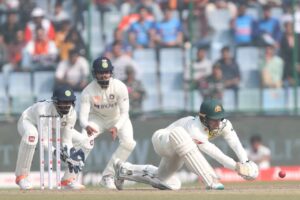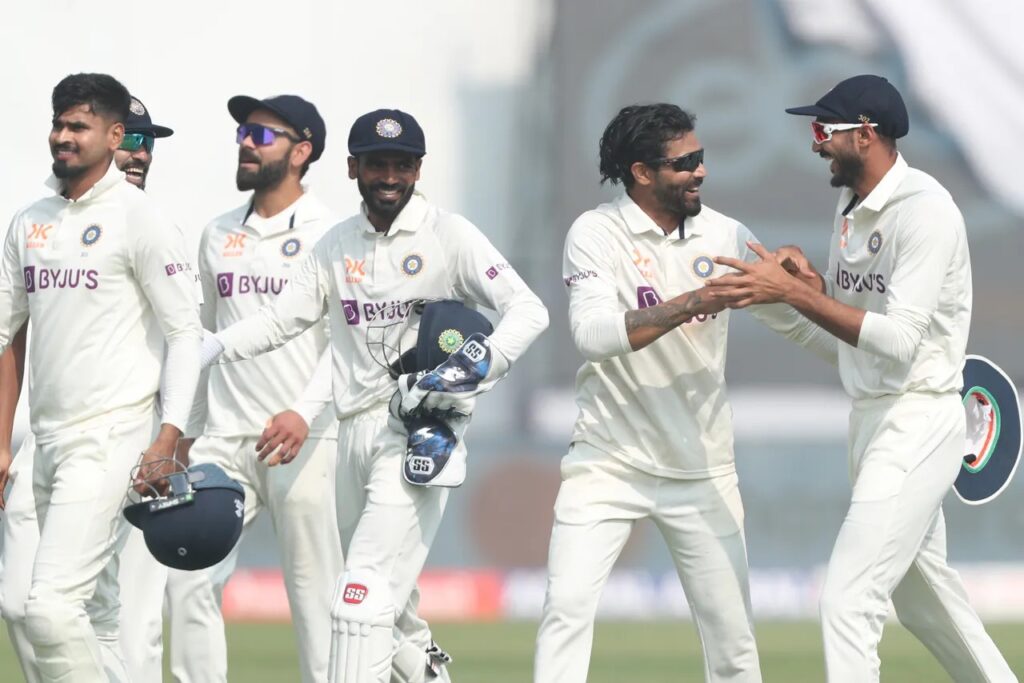
Their own greats, like Ian Chappell, Matthew Hayden and Damien Martyn, could tell Australia’s batsmen what they’re doing wrong in India. Veering between the docile and the reckless, they have forgotten to play the ball on its merits.
Australia are the world’s best Test side. At least, that’s what the World Test Championship table tells you. Yet, in the past fortnight, they have twice been bowled out in less time than it takes to finish a Twenty20 match. Their dismal second innings in Nagpur lasted 32.3 overs. In Delhi, they were even worse, losing nine wickets in the morning session on the third day in 18.2 overs.
At stumps on day two, with a lead of 62 and nine wickets in hand, Australia had a chance to bat themselves into a winning position. But what followed on the third morning was a microcosm of everything that Australian teams have done wrong in India for a decade. India win much more than they lose at home, and there’s no disgrace in losing to such a formidable side. But Australia need to introspect at length on why the same mistakes keep getting repeated. Matches can move very fast on spin-friendly pitches, but you give yourself almost no chance of success if no lessons are learned.
Make no mistake, this wasn’t an easy pitch to bat on. India’s first innings was often an ordeal too. But Virat Kohli, Axar Patel and R Ashwin all showed that it was no minefield. Kohli, in particular, was imperious, playing hardly a false shot until a marginal leg-before decision went against him. He covered his stumps while taking guard, played with the spin and had utmost confidence in his method.
The same was true of Axar and Ashwin, whose 114-run partnership at nearly four an over transformed a match that had swung Australia’s way earlier in the day. India’s batsmen either got well forward to smother the spin, or they played right back and watched the ball on to the bat. The main scoring strokes were the drive, and the flicks and nudges through midwicket. The pull was unveiled only when the bowlers dragged it short, and the cut came out when they erred in line outside the off stump.
On surfaces where one ball that leaps out of a crack, or stays low, can cost you your wicket – poor Marnus Labuschagne got one in the second innings – it’s all the more important to trust your method. So far, it’s been hard to see any sort of coherence in the way Australia approach their task with the bat.
Before he was ruled out of the Delhi Test with concussion, David Warner’s batting was characterised by diffidence and uncharacteristic timidity. He barely played a stroke in anger across three innings. In the second innings at the Arun Jaitley Stadium, the pendulum seems to go the other way, with a rash of batsmen out to ill-judged sweeps or slogs across the line.
Instead of trying to get to the pitch of the ball, one batsman after another fell to the cross-batted swipe, on a pitch where you simply couldn’t trust the bounce. This is partly a matter of upbringing. Most Australian pitches encourage back-foot play. On hard and bouncy pitches, you don’t often sashay down the pitch to loft or drive the bowler down the ground. But this generation of Australian batsmen has spent plenty of time in India, whether that’s during the Indian Premier League (IPL), previous international tours or even assignments with the A team.
Several of them have spent weeks and months at the MRF Pace Foundation in Chennai, getting to grips with Indian conditions and the adjustments needed to thrive here. Travis Head and Labuschagne had the right idea in the second innings, of trying to upset the bowlers’ rhythm with a flurry of shots, orthodox and funky. But just as you can’t get stuck in a defensive rut, Indian pitches like this also don’t allow you to attack indiscriminately. Shot selection is the name of the game, and Australia have been found badly wanting in two straight Tests.

There are enough and more examples from their own history to draw on. When Australia saw off India’s legendary spinners in 1969-70, Ian Chappell, Keith Stackpole and Doug Walters all scored masterful centuries. The great Gundappa Viswanath, in his debut series, was the only one to reach three figures for India. In 2001, in a titanic series that was in the balance till the final over in Chennai, Matthew Hayden plundered 549 runs. He rarely gave the bowlers a glimpse of his stumps, and played the cut, sweep and drive with booming power.
Where Hayden was the bludgeon, Damien Martyn in 2004 was more surgeon’s scalpel. His two hundreds and a 97 were central to Australia’s success, as were marvellous innings from Michael Clarke – on debut in Bangalore – and Darren Lehmann. The methods employed were very different. Martyn thrived by playing the ball late, while Clarke’s sparkling century was memorable for its twinkle-toed footwork. What was important was that each man chose what worked for him, and stuck to it.
On this tour, Australia have consistently been caught between two stools. It’s cricket’s ultimate cliché that you play each ball on its merit. With an approach that seems heavily reliant on premeditated notions of how to play, Australia have paid the price for ignoring it. Winning in India is all about common sense and composure. This Indian team undoubtedly has the better spinners – Ashwin and Ravindra Jadeja hardly ever give you the freebies the Aussie slow bowlers did – but the gap between the two sides has seemed like a chasm because of the batsmen’s approach.
Unless that changes and soon, the dark days of 2013 – when the players were asked to write impositions while losing 4-0 – could repeat themselves.




